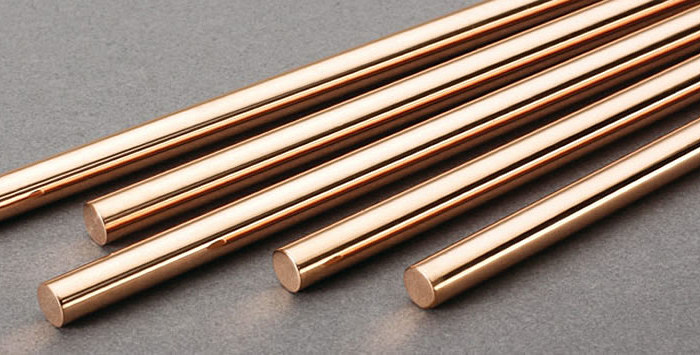Phosphor bronze is an alloy, consisting of tin, phosphorus and copper as main constituents, sometimes with additions of zinc and lead. The structure is made up of three phases:
- A matrix of copper with tin in solid solution, known as the alpha phase, which is comparatively soft.
- A tin rich delta phase which is ha rd and interspersed throughout the matrix.
- A hard constituent of copper phosphate associated with the delta constituent, which is also hard but brittle.
Phosphorus Bronze is consisting of different percentage of tin.

Some of the area where phosphorus bronze is highly used:-
- Architecture : – Bridge bearing plates.
- Fasteners : – Fasteners, cotter pins, lock washers.
- Industrial : – Bourdon tubes, bellows, perforated sheets, chemical hardware, truss wire, springs, sleeve bushing, diaphragms, clutch disks, pressure responsive elements, beater bar, textile machinery, welding rods.
- Electrical : – Various Relay contacts, rotary switch slides, circuit breaker contacts and fuse clips.
- Electronics : – Various Connectors, Lead frames, lead terminals and transistor terminals
- Automobiles : – Bearing Frames, Hydraulic Pressure caps, packing bearing, clutch plates or Electrical parts.
- Musical Instruments :- Phosphor bronze is preferred over brass for cymbals because of its greater resilience, leading to broader tonal spectrum and greater sustain. Phosphor bronze is one of several high copper content alloys used as a substitute for the more common types of brass to construct the bodies and bells of metal wind instruments. Examples of instruments constructed using high copper alloys occur among members of the brass instrument family (trumpets, flugelhorns, and trombones) and one member of the reed instrument family, saxophones.
- Others : – Blades, springs, anti-corrosive chemical machinery parts and diaphragms.
Read Also: Phosphor Bronze Wire versus Copper Wire

